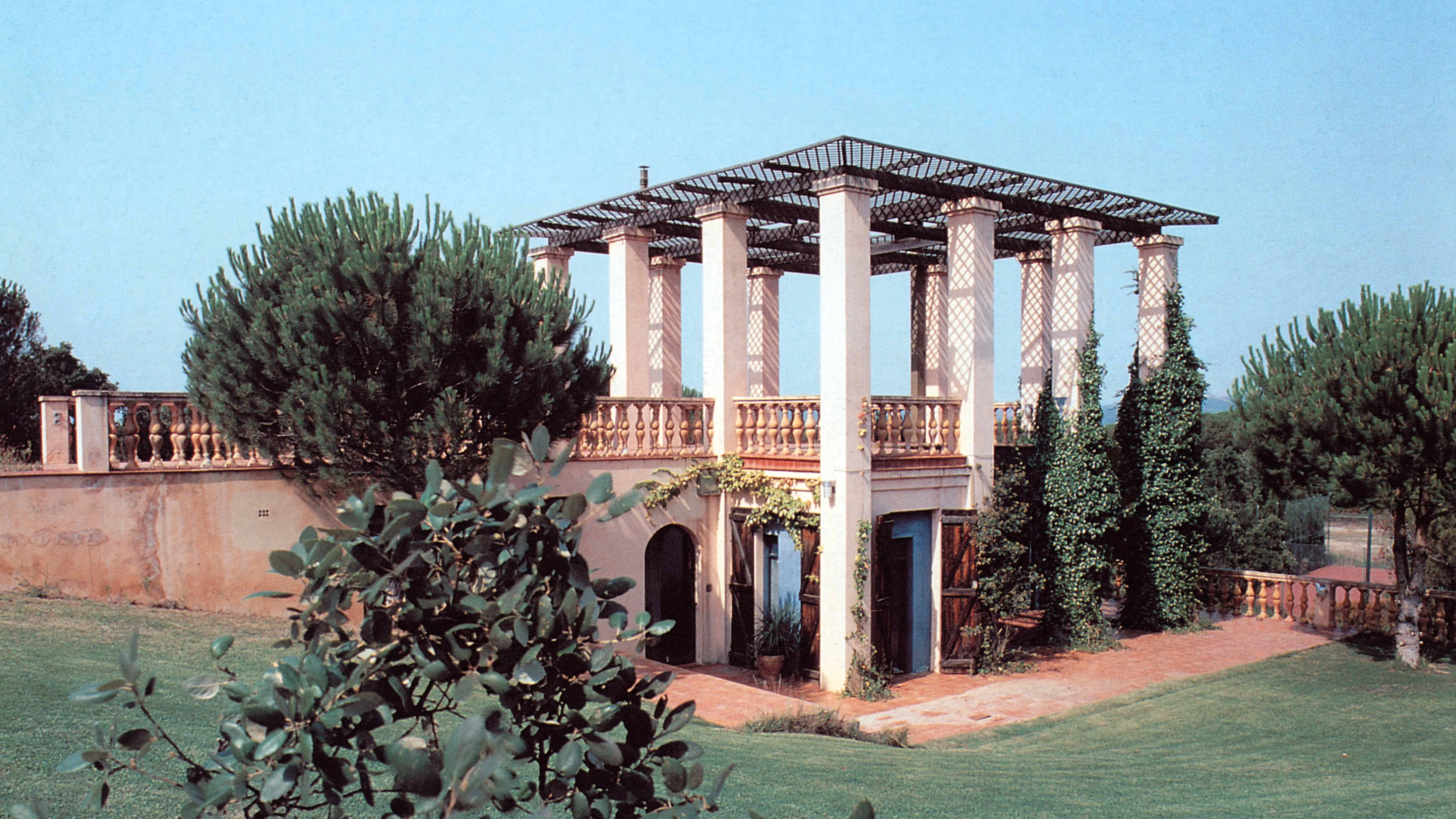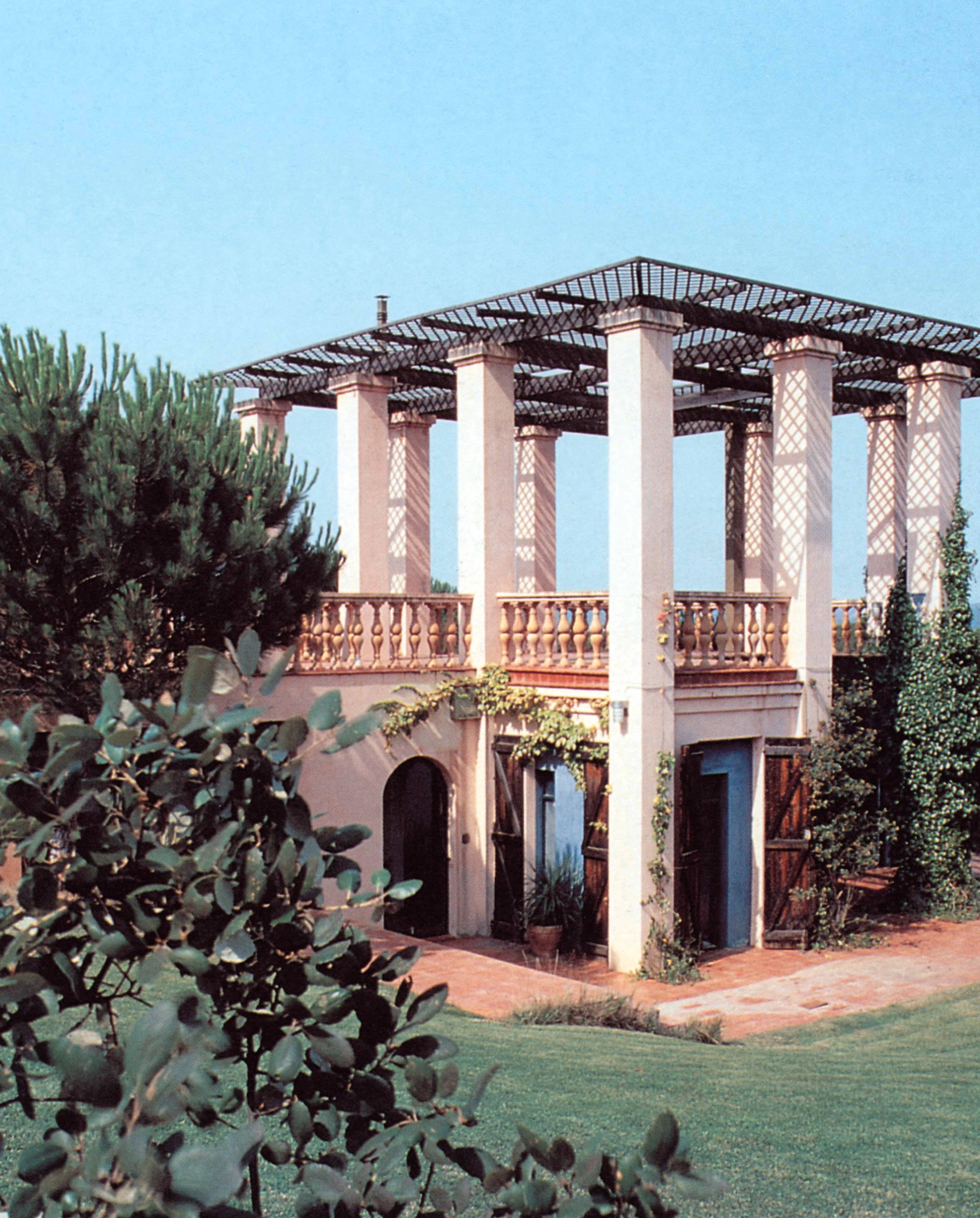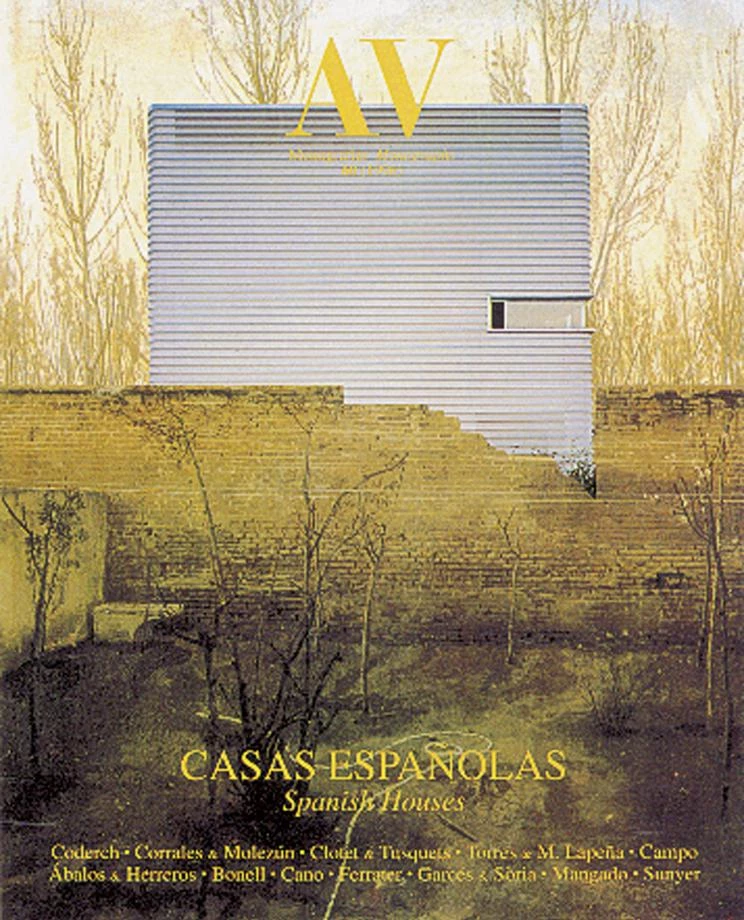Belvedere Georgina, Llofriu
Lluís Clotet Óscar Tusquets- Type Housing House
- Date 1971 - 1972
- City Llofriu (Gerona)
- Country Spain
- Photograph Lluís Casals
At the end of the sixties, the exhaustion of the postwar period gave way to an intellectual renewal that was expressed in a deep change in customs, social movements and artistic impulses. In architecture, the Modern Movement became a mannerist expression of its original principles, producing insufficient results. Two currents which came from different sources began to take shape in propositions based on aspects of history which Modernism had willfully neglected. In 1966, when The Architecture of the City by the Italian Aldo Rossi was published, Robert Venturi’s Complexity and Contradiction appeared in the United States.
Lluís Clotet and Óscar Tusquets enjoyed seeing the leaps and bounds the American made over the modernist dogma while showing his admiration for Michelangelo and popular culture. So much, in fact, that Tusquets, together with Xavier Sust, was motivated to compile other texts by Venturi and Scott Brown, preempting the Spanish edition of Complexity with the publication in 1971 of Aprendiendo de todas las cosas (Learning from Everything). With their minds set on Venturi’s Philadelphia and their experience with Milanese design at the studio of Correa and Mild, Clotet and Tusquets built the Belvedere Georgina. Its small size and relaxed freshness defy the immense influence it had and the number of works produced as a result in the following years.
Georgina is a small guesthouse, but above all it is a garden structure for the Casa Regds, which the same architects had finished slightly earlier next to the ruins of a Catalan farmhouse in the Ampurddn region. The belvedere, like those grottoes replete with shells and peopled with inanimate figures that terminate the perspective views in mannerist palaces, is a classical folly. On this occasion it makes recourse to Pop Art, which is manifest in its flagrant graphic and material use of neoclassical balustrades. With a minimal program and built along the lines of fifties California construction, the small structure offers a shady spot in which to park the car.
Yet is not this organization, so unconventional here in Spain, that accounts for its critical renown, but rather its provocative attitude, an attitude which arrived so opportunely, making a cocktail of schematic abstraction and Mediterranean feeling, contaminated by popular tastes to be found only among a Catalan elite alert to novel suggestions...[+]







